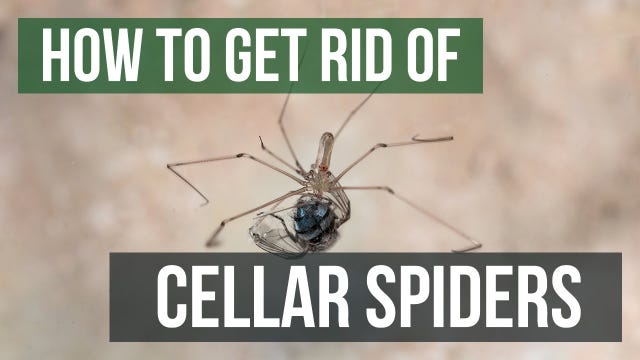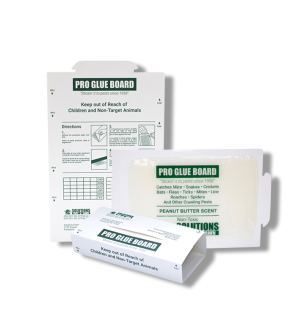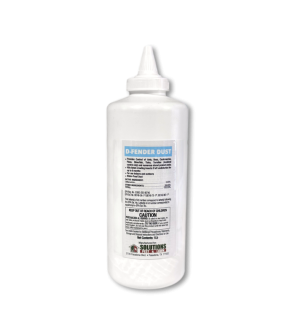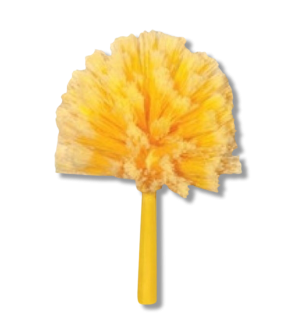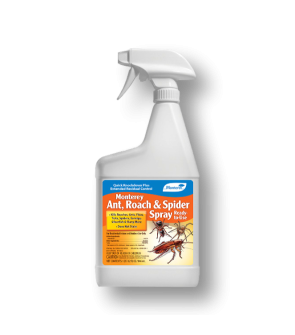Gain access to personalized product screening, the best pricing, rewards, and more!
Most Effective Products
Cellar Spider Control: How To Get Rid of Cellar Spiders (Daddy Long Legs)
A spider species known to frequently infest homes is the cellar spider, also commonly called daddy's long legs.
This spider earned its descriptive (yet unoriginal) nickname due to their very long and thin legs. Where it might get confusing is that the cellar spider's nickname, "daddy Long Legs," also refers to a similar-looking long-legged arachnid called harvestmen. An important distinction is that the harvestmen, while an arachnid, are not true spiders, whereas a cellar spider is.
Cellar spiders, aka daddy long legs, gather in large numbers in dark, secluded areas like cellars, basements, garages, and storage areas. They are so common in homes and other buildings that, in parts of the U.S., they are as common as houseflies.
If you have an issue with cellar spiders on your property, this guide can help. Our pest control experts have compiled step-by-step instructions using our top-recommended products to help you get rid of cellar spiders yourself.
Identification

Before you can proceed with a treatment program, it is important to correctly identify the pest you are dealing with and confirm whether they are a cellar spider.
Because cellar spiders and harvestmen look so similar, it may be hard to tell them apart. The traits below can help you distinguish between a cellar spider daddy's long legs and a Harvestman daddy's long legs. In the image above, you can also compare the cellar spider to a daddy's long legs.
- Cellar spiders have two basic body segments (cephalothorax and abdomen), eight legs, and eight eyes. Harvestmen/"true" daddy long legs have one body segment, two eyes, and eight legs.
- A big difference between cellar spiders and harvestmen is that harvestmen do not possess the typical spider abilities of spinning webs, nor do they produce silk.
- Cellar spiders are light yellowish to light brown or gray, while Harvestmen have a more reddish hue.
- The cellar spider's most distinguishing traits are its very thin legs (1.75 to almost 2 inches long), which are much longer than its body (0.25 inches long).
- Cellar spiders characteristically like to hang from their spun webs upside down in dark, secluded areas.
Use the image and description above to help you identify your property's cellar spiders (daddy long legs). If you're having trouble with identification, contact us, and we will assist you in correctly identifying the pest and offer treatment options for control.
Inspection

Once you have identified and confirmed that you are dealing with cellar spiders, you can proceed with Inspection. During this phase, you must pinpoint where the cellar spiders are frequenting and most active to determine where to focus your treatment application.
Where To Inspect
Cellar spiders like to hang around areas where there is high humidity and where it is dark and secluded. In a residential setting, you may find cellar spiders in damp, shaded areas such as around trees, under the eaves of a home, or logs and rocks. If they do their way inside a house, it will be in dark, damp, secluded areas like cellars, basements, crawl spaces, garages, and sheds.
What To Look For
You're looking for cellar spider activity or any evidence of their webs. Cellar spiders tend to layer their webs, creating the appearance of cobwebs in ceiling corners and other areas rarely visited in a home or building. Also, look for any entry points the cellar spider or other insects may use to gain access indoors, such as broken doors and window seals, garage door openings, and any other crack or crevice where they can hide.
Treatment
Before chemical application, remember first to read all product labels, follow their application instructions, and stay safe by wearing personal protective equipment.
Cellar spiders don’t like to enter indoor environments unless there is a sufficient source of water or dampness present. That is why they are commonly found in damp basements and cellars.
Treating a cellar spider infestation is quite simple compared to other spider problems. We recommend treating the infestation with Supreme IT insecticide and laying out glue traps to capture the pests.
Step 1: Declutter
To start, we suggest thoroughly cleaning your home and reducing clutter.
Tidy up your home, get rid of unnecessary items that are taking up space, and especially clean up your storage spaces, such as closets, the garage, and the basement/attic. This will send a message to the cellar spiders that they are not welcome.
Step 2: Exclusion
A home with cracks, gaps, and holes invites the cellar spiders and other insects to gain free access to your living space. To combat that, begin by sealing cracks outside the home and putting screens on doors and windows.
It is important to scan your home for possible entry and use caulk to fill those gaps. Do this inside and outside, removing any places where cellar spiders can hide. Drying up damp areas and fixing moisture issues are also important to discourage cellar spiders from hanging around.
Step 3: Knockdown Webs with a Cobb Webb Duster
For cellar spider webs and nests that you find, you should take them down with the help of the Cobb Webb Duster. The Cobb Webb Duster head has special small nylon bristles, perfectly designed to remove cobb webs and spider eggs. Sweep and wipe the webbing away. If the webbing is too far to reach for removal, the Webb duster head has a threaded end that can be used to attach an extension pole.
Step 4: Insecticide Treatment with Supreme IT Insecticide
Indoors, we recommend treating all your baseboards, around windows and doorways, and any other cracks or crevices where you think cellar spiders might be entering or hiding with Supreme IT Insecticide. This also addresses the food source of cellar spiders—other smaller bugs. With other bugs eliminated, cellar spiders will search for food elsewhere.
Supreme IT is a high-quality professional insecticide concentrate that is much more powerful than anything you would find at big box stores, and you only need a small amount to get the job done. The best thing about it is its residual effect, which means it can remain effective after application for up to 90 days.
Measure the square footage of the area of your home to determine how much Supreme IT you will need. For spot treatments, dilute 1 fl. oz. of Supreme IT (which can treat up to 1,000 sq ft.) into a gallon pump sprayer and shake the sprayer to mix the product well. After a few pumps of the handle, you're ready to spray.
Spray door and window frames, floorboards, corners, and other areas where you have seen activity. Focus on spraying in dark, damp, secluded areas like your basement or garage.
Prevention
After eliminating the cellar spiders from your home, you need to be sure they don't make a return. Practicing good housekeeping and implementing a regular cleaning routine, and organizing your storage spaces will do wonders in preventing cellar spiders from stepping foot in your home again.
- Use caulk to seal entry points that cellar spiders may use to gain access into your home.
- Fix plumbing leaks, use a dehumidifier, or find another method of keeping your basement or crawl space completely dry to address moisture issues around the home.
- Monitor cellar spider reemergence or other pest activity by laying out glue boards.
- Spray a perimeter treatment of Supreme IT Insecticide outside your home every 90 days to discourage daddy longlegs or other insects from returning.
Key Takeaways
What are Cellar Spiders?
- Cellar spiders (also known as daddy long legs) are harmless but can be a nuisance when they appear in large numbers around the home.
- They are often confused with another insect, a distant relative known as harvestmen (the "true" daddy's long legs).
- Cellar spiders differ from harvestmen because they can spin webs and prefer damp indoor environments.
How To Get Rid of Cellar Spiders
- Cellar spider control starts with decluttering and exclusion, followed by using a Cobb Webb Duster to knock down any visible webs you encounter.
- Treat your home with Supreme IT Insecticide around your exterior and indoor cracks and crevices to kill and repel cellar spiders and their food source from other smaller insects.
Preventing Cellar Spider Reinfestation
- To prevent these pests from making a return, keep your home free of clutter and conduct preventative spraying of Supreme IT Insecticide around your home to form a protective barrier to keep cellar spiders away.
- Monitor cellar spider and smaller insect activity by setting up glue traps around suspected areas.






